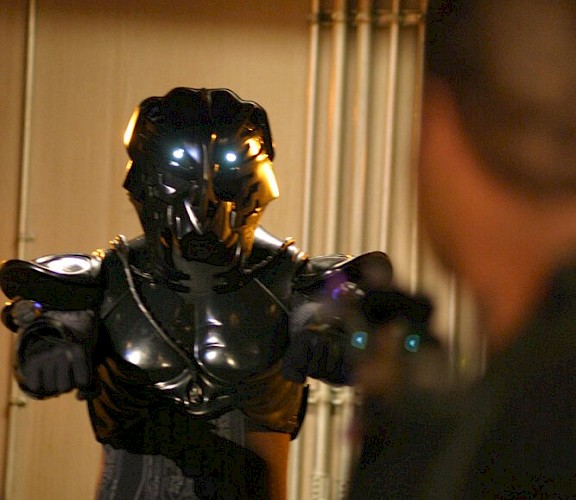Sci-Fi for the Masses
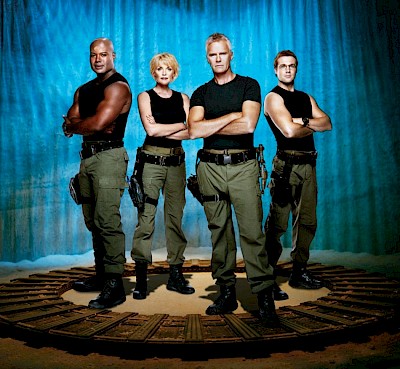
I must say I was extremely sceptical of a TV series based on such a top-notch film, and even though I loved the TV series MacGuyver, I couldn’t shift the mental image of MacGuyver travelling to other planets. As such, and much to my own loss, I didn’t give the series the time of day when it first aired on Channel 4 here in the UK.
It took a chance viewing of a two-parter Into the Fire/Serpent’s Lair one afternoon to make me realise that this was more than just a show with the same four cast member boring the pants off the viewer each week. With this two-parter I saw that there were story arcs, character developments, a touch of humour and a good sense of camaraderie that made the whole thing more believeable than I’d imagined it would be.
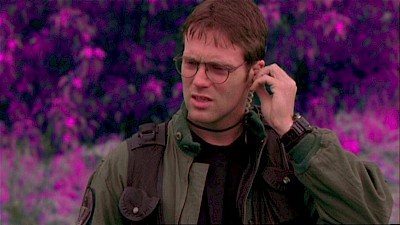
The Characters
Colonel Jack ONeill, played by Richard Dean Anderson (who for some reason gets his name slapped all over the DVD box, titles and just about anything else… must be marketing plot to subtly say “Hey look! We’ve got MacGuyver here so it has to be good!”), is team leader of SG-1 – the first team formed to travel to new worlds through the Stargate, which it just so happens can go to thousands of other worlds and not just Abydos which we see in the motion picture.
Richard Dean Anderson altered his character considerably form the stony-faced O’Neill which Kurt Russel played in the film and, thankfully, RDA’s O’Neill can crack a joke or two. In fact, he’s the main source of comedy in the entire show which serves to lighten up what would otherwise be an all-too-serious show. He gets to act dumb when someone spurts out a load of techno-babble so it gets explained to him (and us) in layman’s terms - something which Star Trek ought to have done!
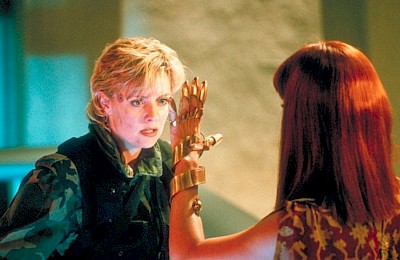
Carter is the science geek and serves to basically discover the source of each show’s problems which the team then have to put right before they can return to base for a mug of cocoa and a choccy biscuit.
Following on from the film, we see the return of Dr Daniel Jackson, the archaeologist who unravelled the secrets of the Stargate and made it work in the first place. He plays the character of Daniel Jackson so faithfully to the film that it’s almost scary – the mannerisms and speech are identical and it’s only when you actually go back and check the film that you can convince yourself it’s not the same guy.
Dr Jackson basically serves to read all manner of alien language just to get over what would otherwise be a very tedious drawback in each episode. Apparently learning alien languages is relatively easy if you look like a complete nerd.
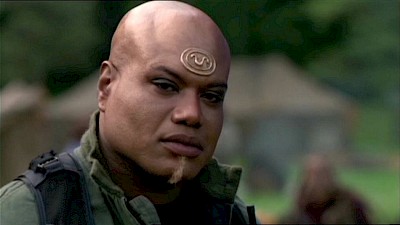
So…a range of characters so varied that even if one manages to bore you, there’s always another you’ll be fond of.
The Ongoing Stories
Thankfully, this show veers away from the Star Trek way of thinking and ultimately, the team interfere with a different alien race in each episode just by stepping through the Stargate. This is often where the problems begin as the only other people who use the gate system are the evil Goa’uld. So, the team often find themselves having to tell the locals that they’re not the bad guys and quite often one or all of the team will be taken prisoner in one way or another during the early episodes.
Kicking off from the first series though, and indeed the first episode, we get a number of story arcs to keep us tuning in for more.
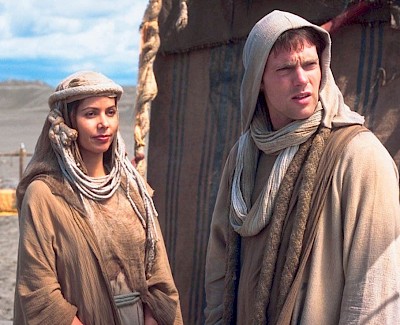
We’re introduced to the fact that the Jaffa only follow the Goa’uld as they believe them to be gods, so Teal’c and his mentor – Master Bra’Tac (Tony Amendola) – set off to overthrow the Goa’uld and bring freedom to all Jaffa.
Early on we’re introduced to the idea of the System Lords – rival Goa’uld who have taken on the guise of ancient earth religious figures. Initially, they’re mostly from ancient Egyptian mythology, but as the series progresses we see some of them portraying ancient Greek and Japanese figures.
We get our first introduction (though not an actual sighting) in season one of what will turn out to be Earth’s first major ally – the Asgard. The Asgard are a powerful race who could defeat the Goa’uld and bring peace to the galaxy, but as we find out in a later story arc, they’ve got their own problems to deal with – the deadly Replicators!
Series 3 or 4 (I forget which) sees the introduction of the Replicators. These are little spidery-type robots made up of small building blocks who can rebuild themselves when damaged and move from planet to planet using up resources to build more replicators and seek out new technologies. They’re like Star Trek’s Borg, but they just opt for killing other life forms who get in their way, thus making them even more formidable and enemy.
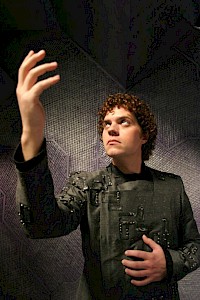
Thankfully the characters do evolve and O’Neill warms up a little towards Dr Jackson, Teal’c occasionally says more than three words an episode and *gasp* even smiles, and there’s usually a hint in one episode in each season that O’Neill and Carter may have more than just feelings of friendship for each other.
The supporting cast also helps to provide a little variety in the show – Major General George Hammond (Don S. Davis) is the base’s leader. He serves to keep the team under control when they occasionally want to go on a suicide mission – it’d make the show less believable if they were allowed to go unchallenged, though he’s usually talked into letting them do what they want…in a believable kind of way...
Dr Janet Fraser (Teryl Rothery) always patches them up no matter what alien disease they bring back with them, but it’s always explained in a way that you can believe rather than just a one-injection-cures-all fashion.
Apophis (Peter Williams) – the evil Goa’uld who runs off with Dr Jackson’s wife – brings an air of arrogance to the show that sets the template for all the Goa’uld we meet from here on in.
Those Hard-Working Folks Behind the Scenes
The actors make the characters – no doubt about that, but without considerable assistance they wouldn’t be able to make the show work.
The writers behind Stargate are the real heroes of the show and succeed in writing episodes which should at the very least interest you and, hopefully, immerse you deeply in their world. Cleverly, as you never know when a series will be cancelled, they write cliffhangers into the last episode of each of the first four or five seasons which had the fans begging for more, but there doesn’t seem a need to continue down this track now that the show has entered it’s tenth season!
Bringing those stories to life, the directors (especially the regular ones such as Martin Wood and Peter DeLuise) do an amazing job and have a good working relationship with the cast and crew (as can be seen from the extras on the later DVDs). I don’t think I’ve ever seen such messing about going on on set and I’m the kind of sad individual who watches all the extras.
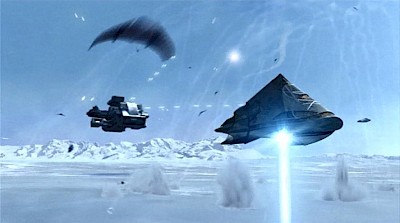
The sound effects team and composers have also done a fantastic job in continuing the mood from the motion picture, but branding it very much as their own, all the while fitting the mood or effects requirements of the scene.
Over all, the show just works. All the elements above come together to provide forty-odd minutes of action-packed entertainment each episode which will have you gripping the edge of your seat and wanting more. There’s love, laughter, life and death and a lot more besides.
It’s not just easy-viewing television – it’ll leave you wanting more!

